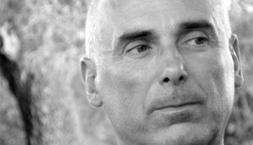Professor in Residence, Department of Architecture, GSD, Harvard University, Cambridge MA, USA
Architecture (comme mon esprit s’y retrouve!) 1
The Building, a thought-provoking book edited by José Aragüez - adjunct professor at Columbia University and a PhD candidate at Princeton - is the result of a multi-phase experiment.2 Thirty authors were invited to write 1,200 words about a building of their choice from the last twenty-five
years. The editor subdivided the contributions in groups of five with a common theme. Six authors were asked to react to these pentads, resulting in 4,000-word essays. These thirty-six texts form the main part of The Building; a second part consists of five “critical essays on The Building” that are rather theoretical in nature; and in a third and final part “The Building in Architectural Education” is discussed, also in five essays - leading to a total of forty-six texts preceded by an introduction. To top it all off, Mark Cousins has the last word - his conclusion (“There is no simplicity here. There is much confusion.”) comes like the wafer-thin mint offered to Mr. Creosote in Monty Python’s The Meaning of Life: a miniscule dessert that causes the obese restaurant visitor to explode after an enormous meal.
The intentions of Aragüez in organizing the symposia in 2014 that led to The Building were nevertheless justified, although architectural culture in the twenty-first century is too vast, fragmented and diverse to be reduced to his analysis, and exactly that is the problem.
Over the last few decades [Aragüez states in the introduction] architectural history and theory have done a remarkable and necessary job of expanding their limits and audiences. The flip side of this expansion, however, has been a marked displacement of the object, and with it ultimately a certain neglect of architectural thinking proper. On the other end of the spectrum, discussions centered firmly round design process and outcome have often proved self-referential (e.g. those around “autonomy”) or restricted to the spheres of practice and studio teaching alone. This project constructs a bridge between these two tendencies by mobilizing a topic - “the building” - that typically belongs in the latter while seeking the former’s expansion.3
Simply put, Aragüez tries to (re)connect theory and history with practice and teaching, by provoking a renewed interest in “the building,” or - in the case of this book - twenty-five buildings.
The suspicion that architectural sciences have turned away from architecture, traditionally defined as the cultural production of buildings - or to put it more positively, the presumption that the definition of architecture has expanded in such a way that it has become indefinable - is shared by others. At the Fourth International Meeting of the European Architectural History Network in 2016 in Dublin (also a nearly interminable banquet), Jean-Louis Cohen gave the first keynote lecture, summarized as follows:
The discipline of architectural history, or rather of the history of architecture, or else of historical work in architecture, blossoms, as can be measured by the quantitative explosion of dissertations, publications and exhibitions, and faces new challenges. The fragmentation of the objects of research, the miniaturization of the investigations, and the centering on the media, are expanding the field of knowledge, but sometimes result in the weakening of
in-depth efforts to understand buildings and urban schemes.4
More and more research is carried out, but the research deals with smaller and with non-traditional or “non-architectonic” aspects of architecture.
To name some of the topics of the meeting in Dublin that caused Cohen’s discomfort: waiting in the city, the late medieval tower house, labor theory, “big data” in historiography, colonial public works departments, representing finance, the grassroots, the modern village and “what is Europe” ?
These research fields seem indeed unable to communicate with each other and with architectural practices, lacking a common ground - to borrow the title from Chipperfield’s 2012 Venice Architecture Biennale. Although The Building may give this impression, this is not an evolution typical of the twenty-first century or exclusive to architecture - it is a consequence of the division of labor: in any modern system, tasks are separated so that participants may specialize. From a professional point of view, this is a good thing, but as Karl Marx has often pointed out, the division of labor has negative sides. On the one hand, people are excluded from important aspects of culture and society, when they are “unqualified” to understand and appreciate for example the construction of a bridge or the meaning of Ulysses. On the other hand, the tasks they are allowed (or forced) to perform, are so small and fragmented, that they unavoidably lose sight of the “bigger picture,” and no longer understand what it is they are producing or doing. A worker at the assembly line in a car factory not only has a boring and repetitive job, he often has no idea how or why his activities contribute to the finished car. Marx has suggested that this double exclusion can be transcended. In The German Ideology (1845), he famously argued that as soon as society regulates general production, “to do one thing today and another tomorrow, to hunt in the morning, fish in the afternoon, rear cattle in the evening, criticize after dinner, just as I have in mind, without ever becoming hunter, fisherman, herdsman or critic” 5 becomes possible.
This statement can be applied to architecture in two ways. Why is it not possible for human beings not only to engage in architecture - to think and talk about buildings or to design them - but also to participate profoundly and on a daily or weekly basis, in many other human activities and disciplines: literature for example, or cooking, sports and computer programming? Is the discipline and the “activity” of architecture fundamentally separated from the rest of society, or is - as Hans Hollein declared in the 1960s - everybody an architect? A different question has to do with the division of labor within the field of architecture, as soon as it has been more or less silently accepted that architecture is a separate
field - and this smaller division is at the core of The Building. Can you devote your professional life to architecture in general? Or do you have to choose - not only between writing or research and building or construction, but also between urban planning, housing, industrial building, design, durability, daylight, technological façades, parametric design or wood construction on the one hand, and theory, history, the Global South, Europe, drawing techniques, construction history, sociology, philosophy or politics on the other hand?
As Aragüez indicates in a short footnote to his introduction to The Building, Manfredo Tafuri has ascertained this division of and within architecture. He defined, for example, the attitude of the American scene in the seventies as “the exaltation of its own apartness” - maintained and celebrated by a group of architects that satisfied themselves chasing down pleasures without any “social value.” 6 Tafuri also emphasized the tragic cracks within the whole of architecture as a discipline - not in the least in his own life, when he decided to abandon practice, and when he later on concentrated on history, and no longer engaged explicitly with contemporary architecture. For Tafuri, a project like that of The Building would appear naive and hopeless, taking into account that Tafuri considered nearly every project as futile.
But when and why [he asked rhetorically in the opening pages of The Sphere and the Labyrinth (1987)] did it come about that the disciplinary fields recognized themselves to be so specific as to become untranslatable into one another, lacking transcendent unifications? When and why did the autonomy of techniques define itself as a permanent crisis […]? Does it help us in some way, in the field of architecture, to recognize its increasingly radical fragmentation, from the eighteenth century on, into disciplinary areas that only a regressive idealism today wants to reestablish as operative unities? 7
This is the crucial question, for The Building and for anyone deciding to devote her of his life to architecture. Is it possible, in the twenty-first century, to counter the fragmentation in the field of architecture? And is a focus on buildings the way to do so? One answer points in the direction of education: if scholars and architects are pursuing their specialized goals and fields of expertise without acknowledging, let alone reacting to, the work of somebody else, are not students obliged to integrate the many different aspects of architecture during their training?
In The Building, Philip Ursprung indicates as much in one of the five extra “essays on The Building”: “The aim of most architecture schools is to teach students how to make buildings.” But as Ursprung immediately adds, this does not mean that they are invited to reconcile all the facets of architecture (and of making buildings).
In Switzerland, for instance, in the context of a building sector booming since the 1990s, a robust structure of competitions for public and private projects, and a seemingly endless appetite in the market for young architects, theory lies in the shadow of practice.8
Anyone who has visited a graduation show (or has attended a deliberation meeting) will have noticed how also in making a master project, students are forced to choose: either they make a theoretically inclined project (with, for example, Bernard Tschumi’s Manhattan Transcripts (1981) or Rem Koolhaas’ Exodus (1972), but then surely someone will wag a warning finger, questioning the chances of survival of this student in today’s “real” and hard professional practice, or they do make a “realistic” and enforceable project - a building ready to be build - but then the question will be raised whether, in the absence of cultural analysis and theoretical self-examination, they are still professing “architecture,” and not mere and simple buildings or constructions.
It is understandable then, but also disappointing, that the thirty-six contributors to The Building who discussed one building from the last twenty-five years, do not succeed - together or individually - in undoing the fragmentation of the field of architecture. After all, they do mostly focus on that aspect of the building that tallies with their fields of research and expertise. This division becomes clear in the thematic clusters - elements, wholes, content, referents, context and technology - Aragüez has defined. Should a penetrating examination of a project not address all these angles? If we really want to “know” a building (and if we want to use it to approximate in writing the complexity of architecture), should we not discuss the elements that are used in its composition, the resulting difficult wholes, the content and the programmatic strategies that shape the life but also the form of the building, the historical, cultural or philosophical referents that are (often unconsciously) at stake, the context that is always there, even when it is seemingly ignored, as well as the technology that is used to project or to construct the building? The answer is yes, but the 1,200-word limit of each contribution does not allow for this comprehensive approach.
The persisting differences between the texts are also due to the absence of editorial choices: one can wonder if it would not have been better to exclude unexecuted projects or anonymous architecture. Etien Santago, for example, writes about the “Suburban American House,” on a generic location, and with a “generic architect.”
One of the most important buildings of the past twenty-five years can be found not amidst the singular, exceptional works featured in most architectural publications, but rather littered throughout the American landscape. Here I am thinking of the developer single-family house. It has spread like wildfire, and remains extremely popular as a building product.9
What makes a building important? Its exemplary authorship, going against the grain of mass culture, and its intentional, architectural and programmatic charge, or rather its commercial success-by-multiplication? Mark Campbell writes about the Overlook Hotel, constructed in the Elstree Studios in Hertfordshire, England, in 1980 for the filming of Stanley Kubrick’s The Shining (1980)- a temporary construction. Why, then, did no contributor discuss an exhibition - the Strada Novissima, for example, or Herzog & de Meuron CCA-retrospective from 2002? Are they not exhibitions buildings as well? And what about digital architecture? One “building” is treated twice in The Building, that is Siteless, from 2013, by Michael Hansmeyer and Benjamin Dillenburger - an impressively detailed sculpture, the result of computational design by algorithm, and an exterior without, as far as I can see, an interior - a component that remains quite essential for a building. In his accompanying text, Mario Carpo writes:
We must come to the almost inevitable conclusion that, at least for the time being, the logic of digital computation and the logic of our mind seem to have taken two different paths. That is not necessarily a bad thing - as long as we are aware of the difference between these two paradigms, and of what each does best.10
This is true, but can these two paradigms - and the extremely different projects that result from a human mind and from the mind of a computer - be brought together in one and the same book? And if not, would stricter editorial regulations not imply a non-pluralist definition of architecture, an exclusion of many contemporary practices and theories, and thus indeed, to refer to Tafuri again, a not only regressive but also restrictive idealism? These questions show that The Building is a book that ascertains fragmentation and tries to overcome it, but in the end only confirms and reinforces it, not in the least because of the undeniable fact that each contributor has her or his own specialization in the academic industry, or at least tries to have a kind of unique selling proposition. One contributor writes in his curriculum how his work “is motivated by the conviction that architecture as a field of knowledge needs to constantly situate its productive and projective capacities, in both the reconsideration of its conceptual legacies and the testing of its competencies vis-à-vis the specifics of building.” Might this finally be an all-encompassing definition of architecture?
In a more probing contribution (a response to the five texts on “referents”), Michael Meredith suggests that the “atomization of the architectural discipline, perhaps underway for decades, emerged at roughly the same time as a profusion of new media.” This is only partly true, but it does offer a metaphor for The Building: it seems as if the networked individuality of users on Facebook and Instagram is lifted for the duration of one event, while this individuality and difference is exactly the raison d’être of these media.
There may be another reason for the fact that many of the contributions to The Building remain too short and diverse to effectively create connections: they are not written by critics. Writing about buildings and bridging the gap between theory, history and practice: is that not what a critic does? The nouns that pop up in the list of contributors at the end of The Building are many and diverse - architect, writer, professor, dean, editor, PhD candidate, director, theorist, curator, historian, educator, principal, partner, recipient, reader and lecturer - but critic as a title is only used once, by Francisco González de Canales. One solution might be to assume that every contributor is in one way or another already a critic. Sarah Whiting opens her text on “The Building in Architectural Education” by doing so: “I use ‘critic’ here,” she writes, “broadly to cover all architectural writing, ranging from historians to theorists to journalists, and including architects themselves.” 11 Unfortunately, it is not that simple, because also the opposite is true: hardly anybody in the predominantly academic ponds in which Aragüez has fished up his authors, is able or prepared to wear the Epitheton of “critic.” If we define a critic as a writer who represents a general interested public, by discriminating between good and bad architecture, by interpreting and analyzing buildings, by testing the validity of theories, and by placing objects and events within an historical evolution - then the critic is the deus ex machina who can engage in the “architectural thinking proper” Aragüez wishes for in his introduction, but who also can act as an intermediary between practice, academia and the public sphere outside of the architectural boudoir. That this kind of position is more and more rare at architectural schools, is again something that can be located in the writings of Tafuri. He has described the evolutions that led to this predicament, most famously by coining and condemning “operative criticism” in his book Theories and History of Architecture (1968). As Sylvia Lavin wrote in the introduction to her essay collection Flash in The Pan (2014),
Criticism after Tafuri came to denote writing that contained embarrassing outbursts of feeling that needed to be isolated from the supposedly scientific nature of architecture. Theory was the first means of stilling those unverifiable passions. […] More recently […], history stepped in to offer increasing expertise with diminishing affective force. Tafuri’s belief that writing “needs to keep its distance from practice” and that the writer’s “proper task [is] objective and unprejudiced historical diagnosis” is no longer a critical correction but pseudo-scientific doxa.12
It is a fair analysis, and an explanation why for students, scholars or architects today, a building of the recent past is simply too hot to handle exhaustively in writing - and exactly the exponential expansion of theoretical and historical research is to blame.
This does not imply that criticism - or writing about buildings - is exclusively a matter of evaluation, and of praise or disapproval. It also has to do with the kind of discourse one decides to construct or to deconstruct by means of a building. It is a dividing line that is present everywhere in The Building, be it under the surface: can buildings be “used” to discover something, and to debouch into cultural truths, ideas and insights? Or should buildings be met without convictions, exactly to be able to attack and undermine the beliefs and assumptions that are present within?
This is, of course, the old battle between deconstruction and hermeneutics, and between analysis and interpretation. Writing in The Building about Frank Gehry’s Danziger Studio in Los Angeles (a project that is actually too old to be part of this collection), Lavin suggests how the “analysis of buildings today […] presents a formidable critical opportunity because architectural discourse is not accustomed to confronting objects or to distributing attention across many objects without relying on narratives of authorship, myths of synthesis, and the easy transubstantiation of material artifacts into images and signs.” 13 Is interpreting a piece of architecture really something else than “transubstantiating material artifacts into images and signs?” And why should this be a bad thing? Rejecting these interpretative activities can by now also be regarded as a typical legacy of Tafuri, who quoted in the introduction to The Sphere and The Labyrinth from Foucault’s essay on Nietzsche: “Knowledge is not made for understanding; it is made for cutting.” 14 The aversion to the hermeneutic circle - trying to understand something inevitably means projecting and “discovering” your subjective ideas, and thus losing your “objectivity” - is also present in John McMorrough’s text on the Dutch Pavilion at Expo 2000 by MVRDV: “How can we bring with us the insights,” McMorrough asks, “that have preceded us so that we do not construe the building as a refuge from those extended meanings? How, on the contrary, can we find all of these extrapolated meanings already within the building’s configuration?” 15
The danger is that the prohibition of discovering insights and of constructing interpretations, becomes a safe conduct to no longer truly engage with a building. It is an attitude that is more present then it seems - in the general press, but also, for example, in a recent book by architect and writer Paul Shepheard. Buildings: Between Living Time and Rocky Space (2016) is a publication that starts from the same assumptions as The Building, but that confirms, without restraint, the taboo on interpretation and speculation. In the introduction, Shepheard writes: “The thing is to write about buildings as they are; to engage with buildings’ complexity and not simply try to simplify it. Oh yes, and to try to leave them as I found them.” 16 The paradox is that this kind of “respect” for buildings tends to make writing about them nearly superfluous.
As such, it is antithetic to the proposal by Philip Ursprung in his contribution to The Building. In his text “What Buildings Know,” Ursprung defends the right to interpret (and maybe even to overinterpret), and to develop ideas and possibilities that are not unmistakably present, but that can help to tell a convincing and enlightening story about a building - to “understand narrative not as something that stands opposite to critical analysis but as an indispensable element within it that brings all the various elements together.” “My proposal - he writes - is to animate the building, to provide it with a metaphorical ‘soul,’ so to speak. Meaning does not reside a priori in things, cannot be ‘found,’ but is, like architecture, always constructed.” Examples of this approach are quite easy to be found in The Building. Joan Ockman, for instance, has the courage to address Gehry’s recent Fondation Louis Vuitton, and to interpret the building - its composition, its materialization, its image - as an allegory for the lability and motility of contemporary society. Alexandra Vougia admits that SANAA’s Moriyama House in Tokyo is the ideal domestic environment for precariously-employed service workers, as it reveals current living conditions, while at the same time enabling or enforcing them - a dialectic architecture will never be able to escape. And Francisco González de Canales writes about windows in the work of Alvaro Siza (and in the Galician Centre of Contemporary Art) - ambiguously treated elements that come into play when architecture fulfills one of its essential tasks: establishing or at least suggesting borders. In these texts, critical but interpretative writing about buildings reveals their common importance - as works of architecture in which every component not only tries to shelter human bodies but also human minds.
Paul Valéry, Cahiers. Tome II (Paris: Gallimard, 1974), 943.
José Aragüez, ed., The Building (Zürich, Switz.: Lars Müller Publishers, 2016).
José Aragüez, “Introduction: The Building’s Discursive Building,” in The Building,
ed. Aragüez, 10.
Jean-Louis Cohen, “At the Crossroads: Perspectives and Impasses of Architectural History,” https://eahn2016conference.wordpress.com/keynotes/.
Karl Marx, The German Ideology (New York: International Publishers, 1970), 44-45.
Manfredo Tafuri, The Sphere and the Labyrinth. Avant-Gardes and Architecture from Piranesi to the 1970s (Cambridge, MA, USA: MIT Press, 1987), 302.
Ibid., 8.
Philip Ursprung, “What Buildings Know,” in The Building, ed. Aragüez, 354.
Etien Santago, “The Super-Urban House,” in The Building, ed. Aragüez, 98.
Mario Carpo, “Big Data Are for Adding, Not Subtracting,” in The Building, ed. Aragüez, 271.
Sarah Whiting, “Means and Ends,” in The Building, ed. Aragüez, 392.
Sylvia Lavin, “Critique passionnée or a folie à trois,” in Flash in the Pan (London: Architectural Association, 2014), 9.
Sylvia Lavin, “Positive Objects,” in The Building, ed. Aragüez, 136.
As quoted by Tafuri in The Sphere and the Labyrinth, 4, from: Michel Foucault, “Nietzsche, Genealogy, History,” in Language, Counter-Memory, Practice, ed. Donald F. Bouchard (Ithaca, NY, USA: Cornell University Press, 1977), 140.
John McMorrough, “Building Riddles,” in The Building, ed. Aragüez, 92.
Paul Shepheard, Buildings: Between Living Time and Rocky Space (London: Circa Press, 2016), 4.
Ursprung, “What Buildings Know,” 364.
Christophe Van Gerrewey is an Assistant Professor of Architectural Theory at the École Polytechnique Fédérale de Lausanne (EPFL) since 2015. He obtained his PhD in 2014, at the Ghent University, Belgium, with a Dutch-language study of the writings of Geert Bekaert. He has co-edited issues on “good architecture,” “action and reaction in architecture” and the exhibition First Decade of OMA architecture and urbanism practice. He is currently preparing a critical anthology on the work of OMA. E-mail: christophe.vangerrewey@epfl.ch
















